Challenge: Compare work to the works of famous photographers
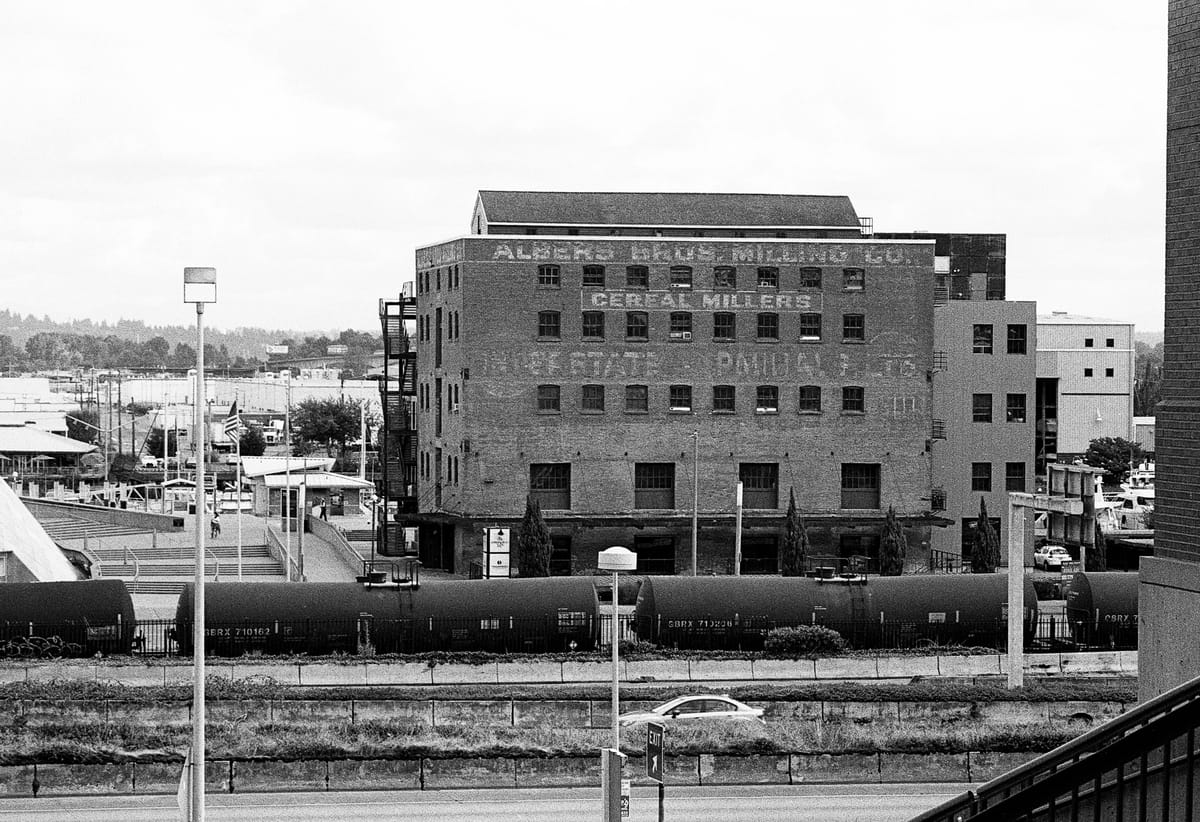
In trying to improve my photography, I've started watching a lot of YouTube and SkillShare videos from other photographers. I love hearing about how people approach their work and where they draw inspiration from.
One of the videos I saw recommended comparing your work to that of well-known photographers. Not for the sake of seeing what's better or worse, but taking the time to interact with your work in a new way.
I've picked 5 of my recent photographs to compare to other photographers' work. For the sake of exploration and discovery, I used ChatGPT to find images that were similar enough to mine to draw some comparisons. This kind of "reverse image search" was helpful because it helped introduce me to the work of artists that I'd not heard of before.
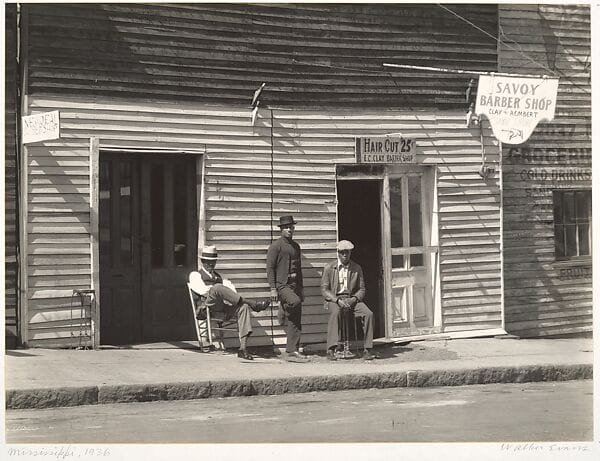
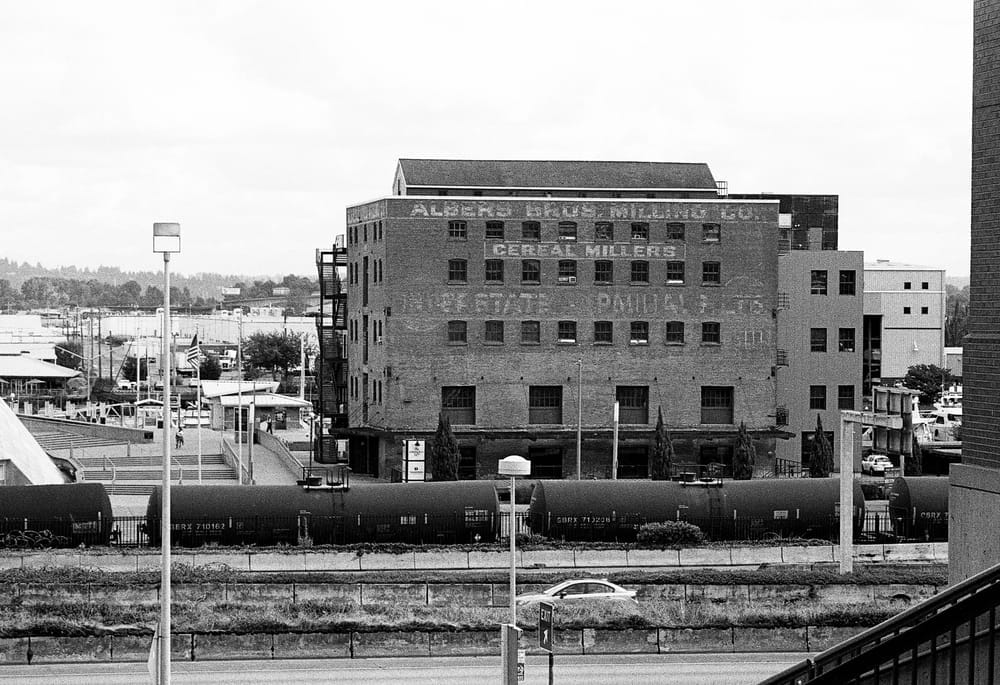
Left: Barber Shops, Vicksburg Mississippi by Walker Evans; Right: Downtown Tacoma in September 2025
Barber Shops, Vicksburg Mississippi
First up is Walker Evans who was known for his work photographing effects of the Great Depression. He's considered a pioneer of the American documentary photography movement. His photos are often straight-forward and neutral avoiding any drama or sentimentality. He captured the world as it was. He presents his subjects (signs, houses, gas stations, etc.) in a very plain or architectural way.
Faded text on historic buildings has always caught my eye. I love driving through small towns where murals would advertise products or the buildings inhabitants. This photo of mine was taken from the steps of the Glass Museum in Tacoma during our September photo walk. Similar to Walker's photos it's taken straight on, and is mostly static. There is no motion blur from the car or train in the foreground. The scene feels completely still.
I looked up the Albers Brothers Milling Company and learned a little bit about its history in Tacoma. They handled the milling of grain into flour and, located directly on the Foss Waterway, had great access to the Pacific ocean for international trade.

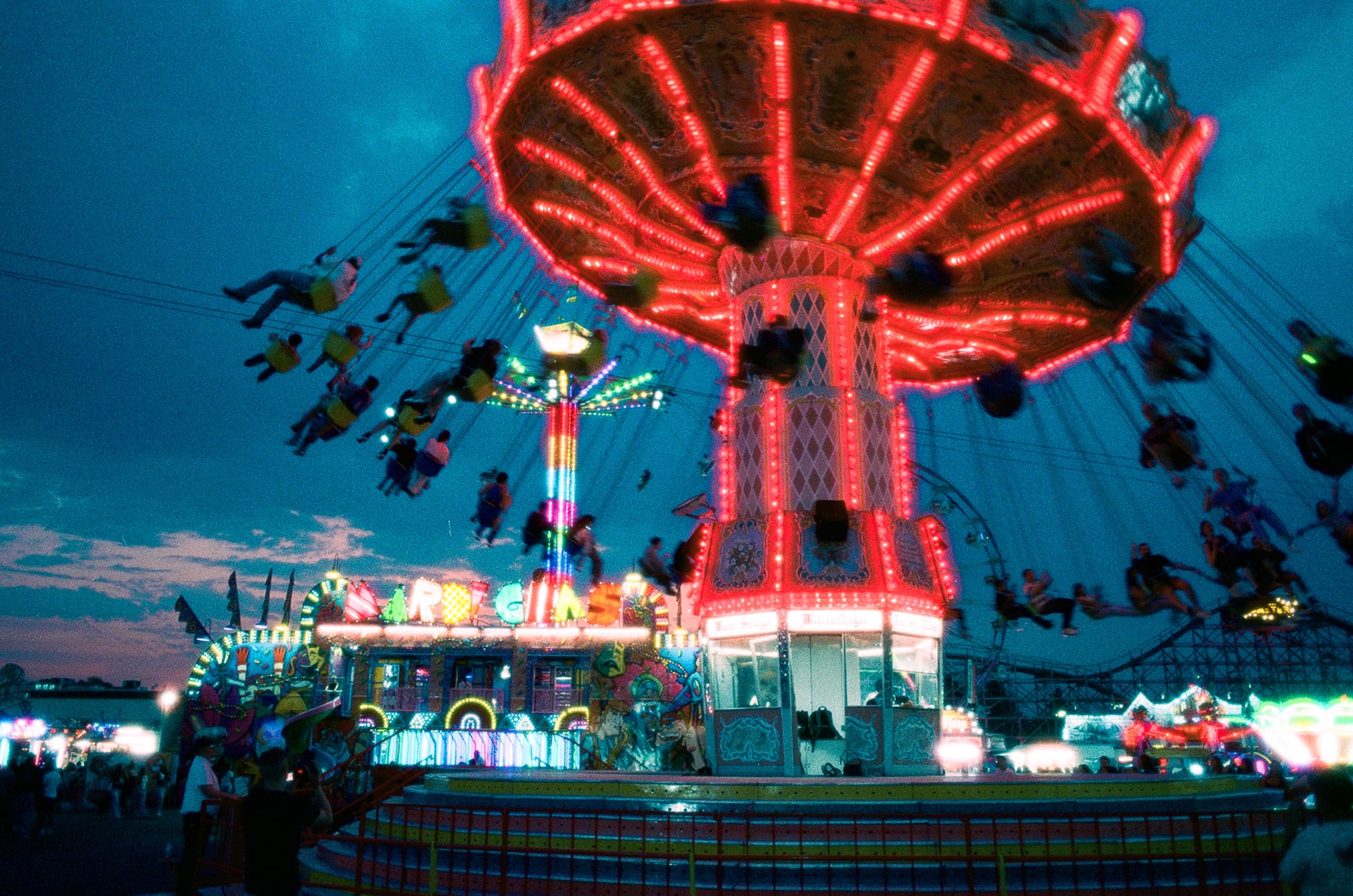
Left: Wave Swinger by Roger Vail; Right: Washington State Fair in September 2025
Wave Swinger by Roger Vail
This photograph taken by Roger Vail in 2001 shows a fair ride throughout the entire duration of the ride. He's been photographing fairs since the early 1970s on 4x5 and 8x10 cameras. He noticed that these rides usually last about 3 minutes and so he adjusted his f-stop to keep the shutter open for the full 3 minutes. Across all of his work you can see the light trail and full geometric patterns of the rides. When you leave the exposure open that long, you're not going to capture the details of the people on the rides or any people in the background. If anything, they might appear as ghosts.
Achieving this look requires patience and a tripod; neither of which I possessed the nights I went to the Washington State Fair. My photo was handheld on my Nikon F3 using CineStill 800T. I believe I took this photo at 1/60 or 1/125 because that's about all I can do holding it by hand. The thing I find fascinating about fairs is that they're pretty similar across the United States. Even in movies there are very few regional differences that separate these gatherings. This was the first time I'd gone to the fair at night and I went knowing that I wanted to capture scenes like this. I used the CineStill 800T to help get more light into each frame without having to go wide open on my aperture.

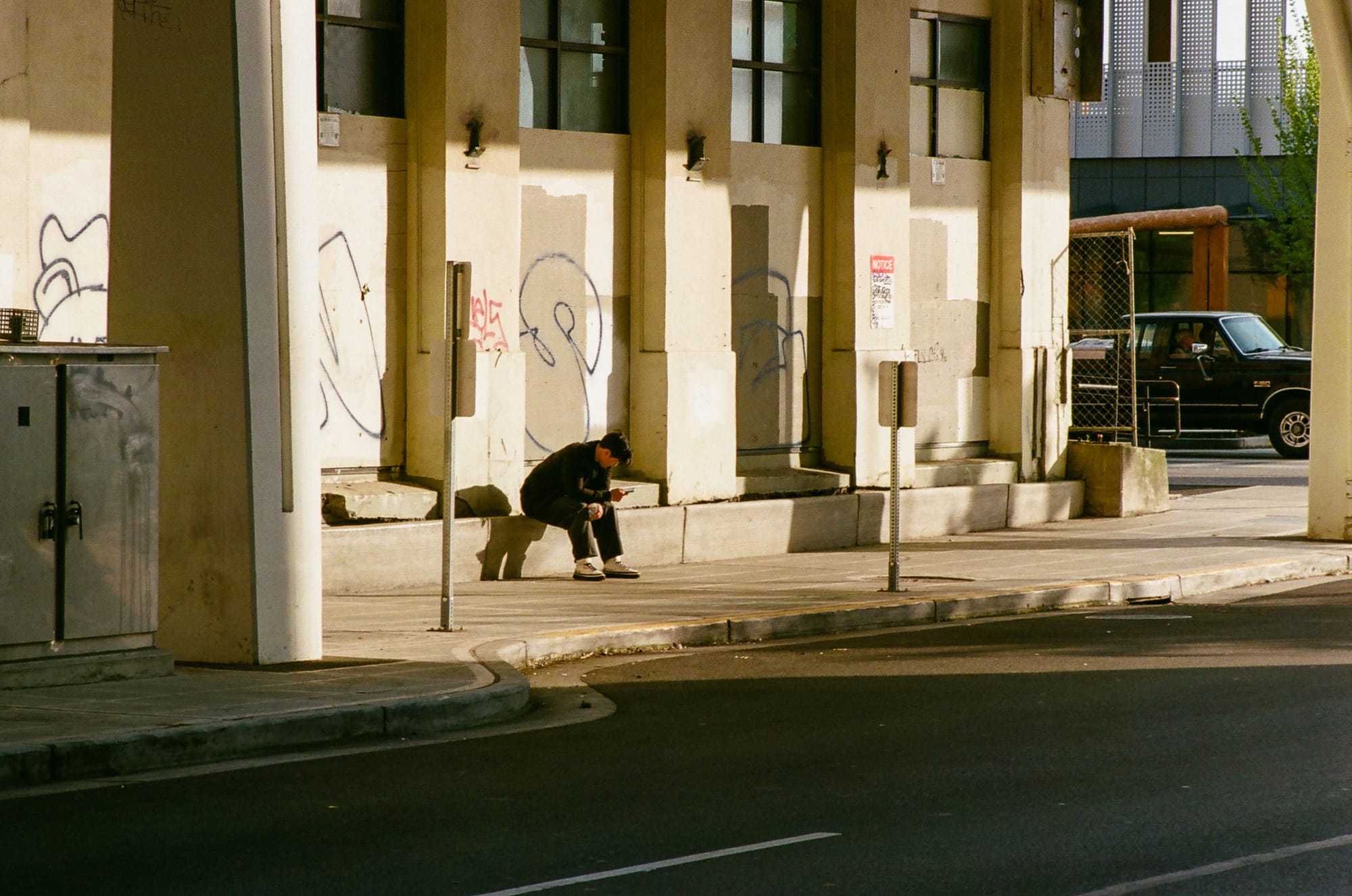
Left: Chicago, 1957 by Ray K. Metzker; Right: Under a Seattle bridge in July 2025
Chicago, 1957 by Ray K. Metzker
Ray K. Metzker helped expand street photography from captured moments to an exploration of light, time, and repetition organize reality. His work makes high art out of every day city scenes. A major aspect of his photography is to clarify the form, not the details. In this photo on the left, you can see the clear outline of the woman passing by and a few details of her face but the focus is on the contrast of her silhouette in front of the building and the repetition of the lights fading into the background of the scene.
Here, in my photograph, I was on my way to the Seattle Ferries on Film Event and caught this guy sitting under the bridge to the ferry. What caught my eye first was the repetition of the pillars and the shadows casted on them. I like that the bridge divided the highlights and shadows throughout the frame and the stillness of the man sitting in the foreground and the truck in the background.

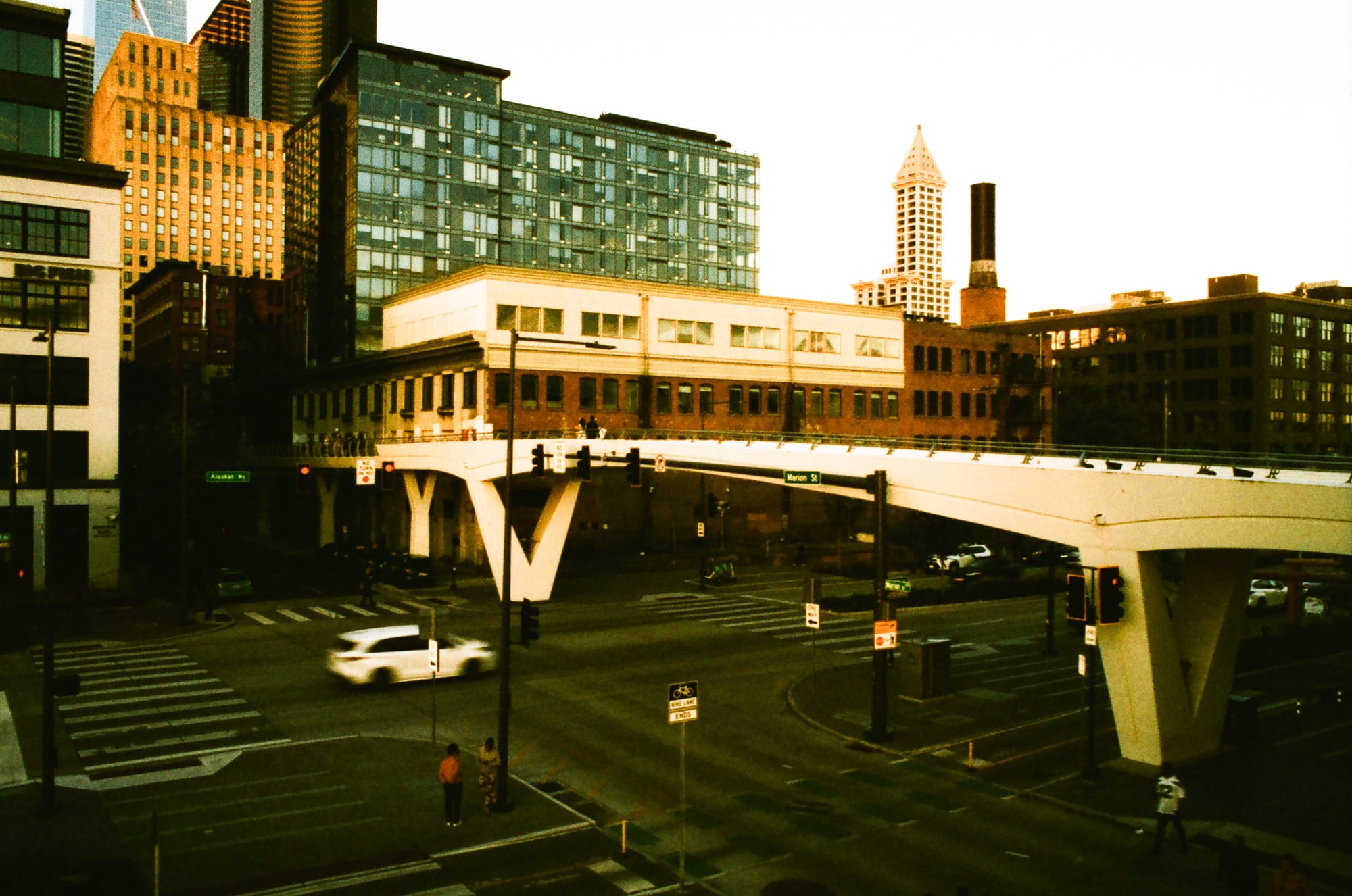
Left: El Paso St., El Paso, Texas by Stephen Shore; Right: Pioneer Square in July 2025
El Paso St., El Paso, Texas by Stephen Shore
Stephen Shore, similar to a lot of the artists above, focuses on turning simple every day life into art. Things like motel rooms, cross walks, or building facades. He carefully composed these simple scenes into art. His shots typically lack drama or motion. As a child, he was given Walker Evans' book American Photographs which moved him deeply and inspired his future work. I personally love really simple photos of cityscapes, especially throughout the decades. I've got a personal passion for capturing signs and advertisements; especially those that fit into the Americana genre.
This photo of mine is actually from a roll that I was really, really disappointed in. It's still not my favorite, but I do think conceptually it follows the same concept of capturing banal scenes. This roll is Harman's Phoenix film and I'm going to have to experiment with it a bit more before I'm comfortable taking it out and about. It is advertised as an experimental film and not intended for everyday shooting. So, my comparison here really is more in the composition and structure of the image than the colors and tones.

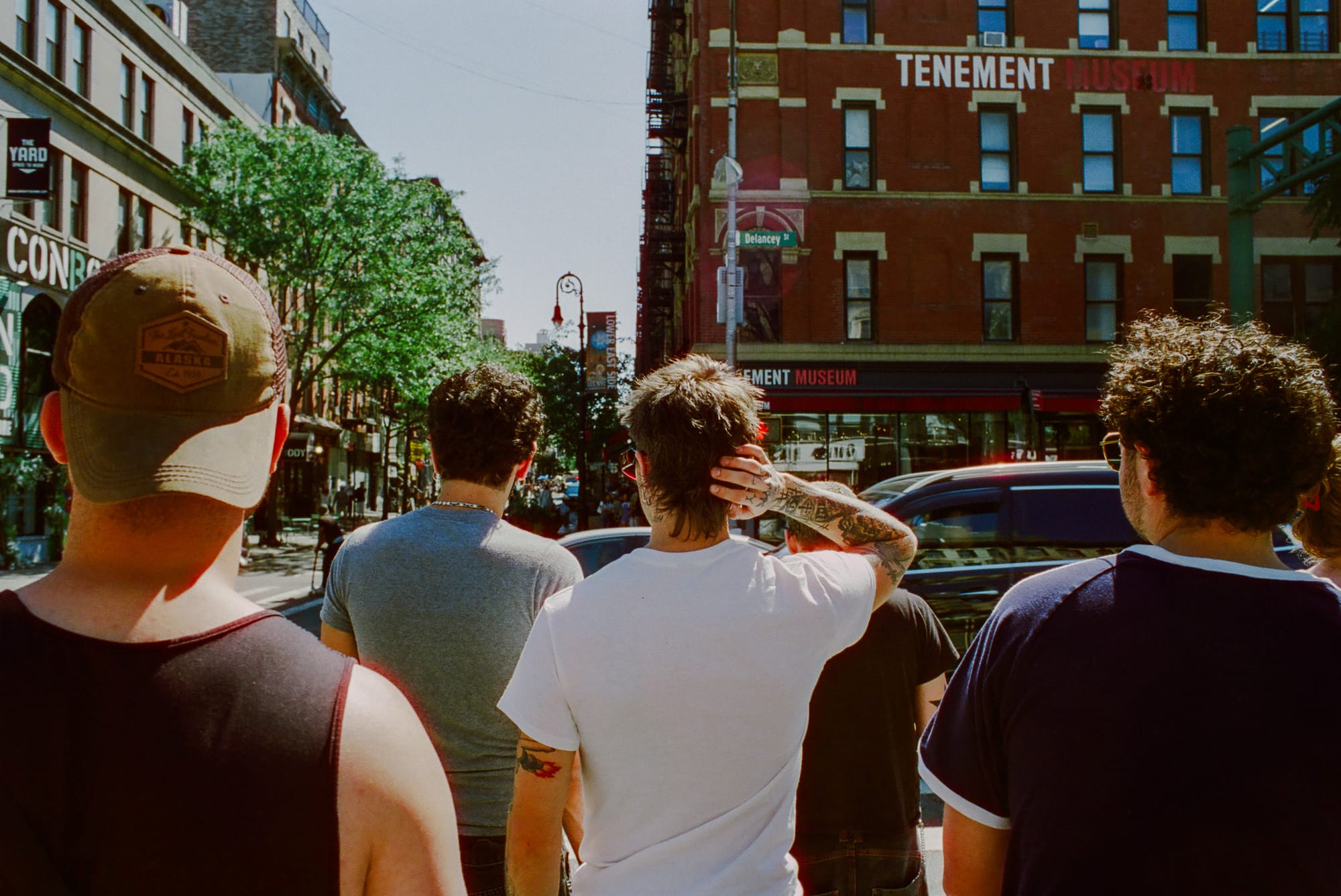
Left: New York City, 1975 by Joel Meyerowitz; Right: New York City in August 2025
New York City, 1975 by Joel Meyerowitz
Joel Meyerowitz was an early proponent of color photography when black and white was dominant in the art world. His background was in painting/advertising and then he pivoted into street photography. This photo captures an immediate moment in time, compared to many of the other works I've featured so far. The couple walking, and the steam from below both add to the fleeting nature of this photo.
I captured this photo while in New York this summer. I really liked the tattoos on the guy in front of me and how the Tenement Museum cuts the frame in half. I like that both of these images mostly show the backs of the people in front of the camera. Without the faces in frame, the viewer is forced to observe the shapes and layers of the photo. I do like capturing portraits of people but in this case I think it forces the viewer's eye to wander around the image as opposed to landing directly on the people in frame.
Conclusion
This was a really fun project! The most useful part of this for me was using it as a way to explore other photographers that I hadn't come across before. Photography as a hobby and profession really isn't that old, but in the short timespan the tools and tricks have changed a lot (but also not at all).
I think I'd like to try to do this every few months. It helps me sift through my work to and frame it in a new context.